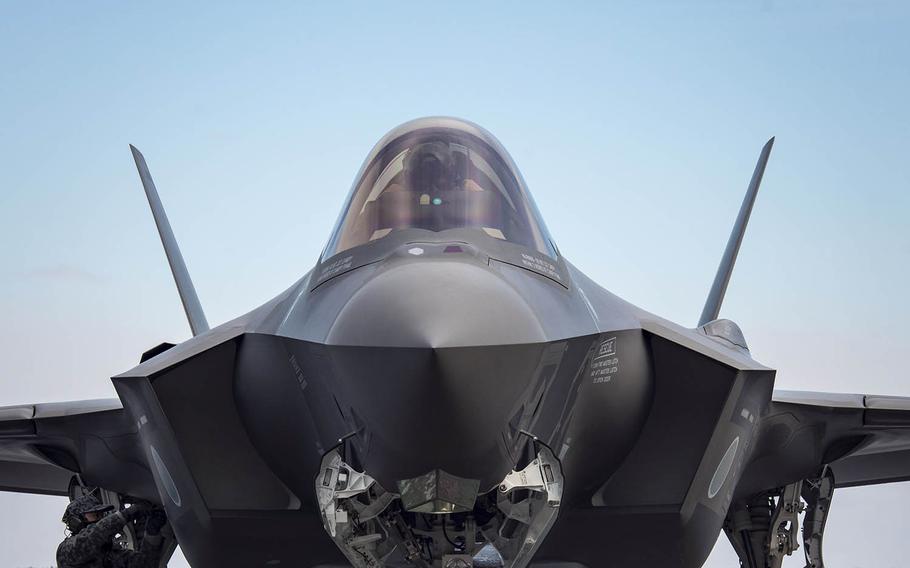
Japan's first operational F-35A Lightning II stealth fighter is seen at Misawa Air Base, Japan, Jan. 25, 2018. (Benjamin Stratton/U.S. Air Force)
TOKYO — Japan’s F-35A Lightning II stealth fighters, including the one that went down in the Pacific Ocean last week, made seven precautionary landings before the crash, the nation’s Defense Minister said.
A search for the lost aircraft and its pilot, Maj. Akinori Hosomi, continued Wednesday, a Japan Air Self-Defense Force spokesman said.
The aircraft went down approximately 85 miles east of Misawa Air Base, its home field in northeastern Japan, just before 7:30 p.m. April 9. A search team found parts of the jet’s left and right rudders in the water about two hours later.
It’s the first loss of an A variant of the fifth-generation fighter anywhere in the world. A Marine Corps F-35B, capable of short takeoffs and landings, crashed in September near the Marine air station in Beaufort, S.C.
Japanese Defense Minister Takeshi Iwaya said JASDF F-35As had made precautionary landings seven times by the end of February, according to a transcript of a news conference Tuesday. He did not say when the first landing took place; however, the first operational F-35A debuted at Misawa in January 2018.
Of those, six landings were made by F-35As assembled in Japan and one was made by an F-35A assembled in the United States. The downed aircraft, which was the first F-35A put together in Japan, made two of those landings, he said.
The fighter made a precautionary landing during a test flight in September 2017 in response to a cooling system warning light. The second occurred in August 2018, after it was delivered to Misawa, due to a navigation system problem, Iwaya said.
Commanders have not set a time limit on the search for Hosomi and the missing aircraft, a JASDF spokesman said.
“Unfortunately, one pilot on board is still missing as of now and the location of the aircraft has not been identified but we will do our best to find them as soon as possible,” Iwaya said.
All Japanese F-35As have been grounded since the incident, which hasn’t changed the country’s plans to field 105 of the aircraft, Iwaya said.
“The cause has not been identified and there has not been any specific information that is sufficient to change the policy as of now, which means that there is no change in the acquisition plan decided at the end of last year,” he said.
The Japan Coast Guard finished its part in the search Friday, but the Japan Maritime Self-Defense Force is still searching, the JASDF spokesman said.
U.S. Forces Japan concluded its support for Japan-led search and rescue operations on the evening of April 16, Air Force Col. John Hutcheson, a USFJ spokesman said in an email Wednesday.
“Though U.S. search and rescue efforts have ended, we will continue to coordinate with our Japanese partners on efforts to locate and recover the missing aircraft. Our thoughts continue to be with the family, friends and colleagues of the missing pilot,” he said.
Sea conditions and the ocean depth, which is more than 3,000 feet in the area where the plane went down, may be complicating the search, the JASDF spokesman said.
Japanese crash investigators will seek U.S. support since the F-35A has a special fuselage and contains classified information, Iwaya said.
Carl Baker, executive director of Pacific Forum in Hawaii, said searchers would use sonar to try to find the aircraft. It’s stealth capabilities, which make it virtually invisible to radar, won’t be a factor underwater.
However, the size of the search area and the lack of precise coordinates could mean a long search, he said.